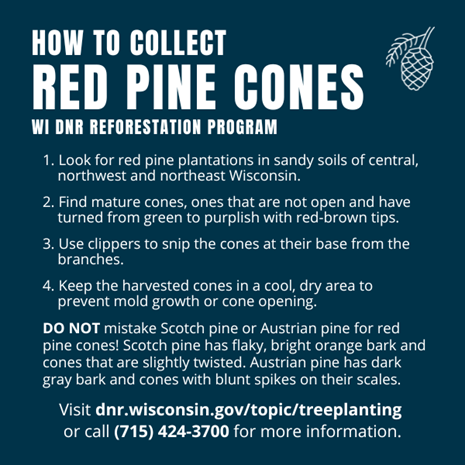By Jeremiah Auer, DNR Regeneration Specialist; Jeremiah.Auer@wisconsin.gov
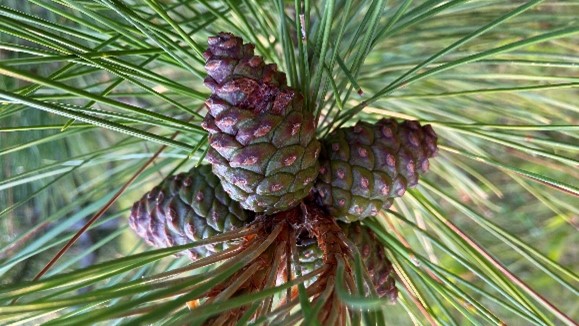 The DNR’s Reforestation Program needs red and white pine cones – more specifically, we need the seeds found within those cones for our reforestation needs. The Reforestation Program produces millions of pine seedlings every year at the Wilson State Nursery in Boscobel, and the only way we can produce those seedlings is with seed collected from the fields and forests of Wisconsin.
The DNR’s Reforestation Program needs red and white pine cones – more specifically, we need the seeds found within those cones for our reforestation needs. The Reforestation Program produces millions of pine seedlings every year at the Wilson State Nursery in Boscobel, and the only way we can produce those seedlings is with seed collected from the fields and forests of Wisconsin.
White pine cones begin reaching maturity in late August and are prime for collecting soon after. There is a narrow window from when the seed within he cones matures and the cones open and disperse the seed. The cones will transition from bright green to a deep purple, eventually maturing to a rich brown. The seed is usually mature when the cones reach a purplish color.
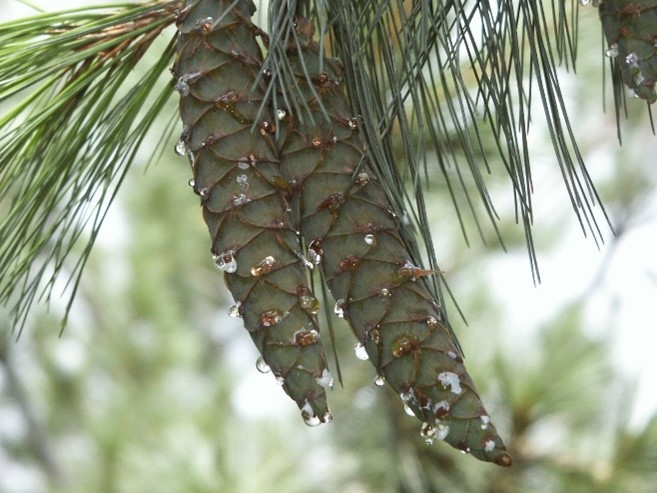
Figure 1: Maturing white pine cones. Notice the ever-present sap dripping from the cones
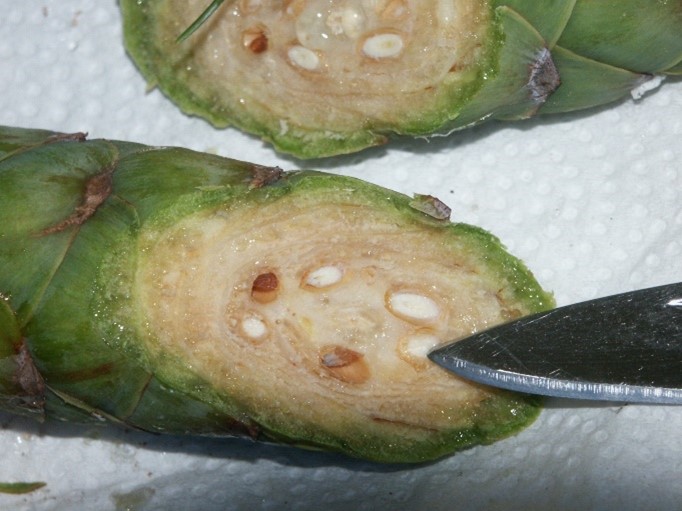
Figure 2: White pine seed within the cones, starting to mature
Red pine cones begin reaching their mature stage in late August and are prime for collecting through late September. When the cones turn from green to purplish and reddish-brown tips develop, it’s time to collect. As a heads-up for those just getting started, or a friendly reminder for the more experienced, cones that are already open are not viable to harvest seeds from and cannot be used by the nursery.
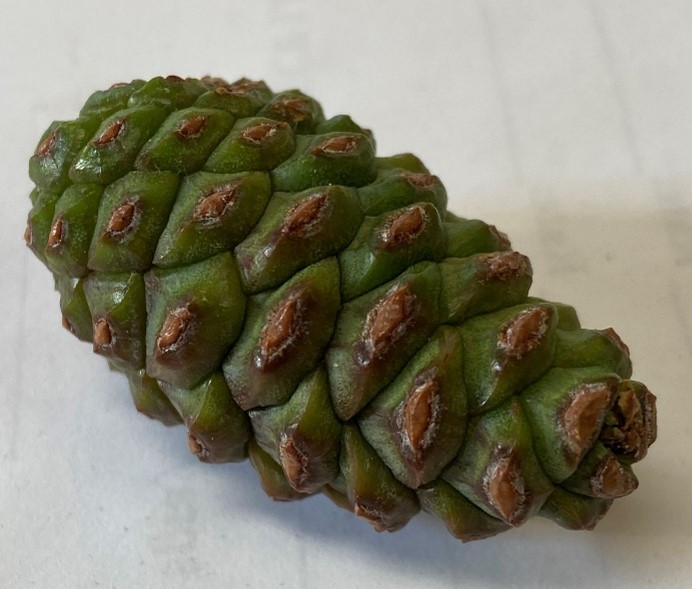
Figure 3: Red pine cone from Central WI. Notice the deep green scales, but browning tips. It is maturing but is not quite ready for harvest.
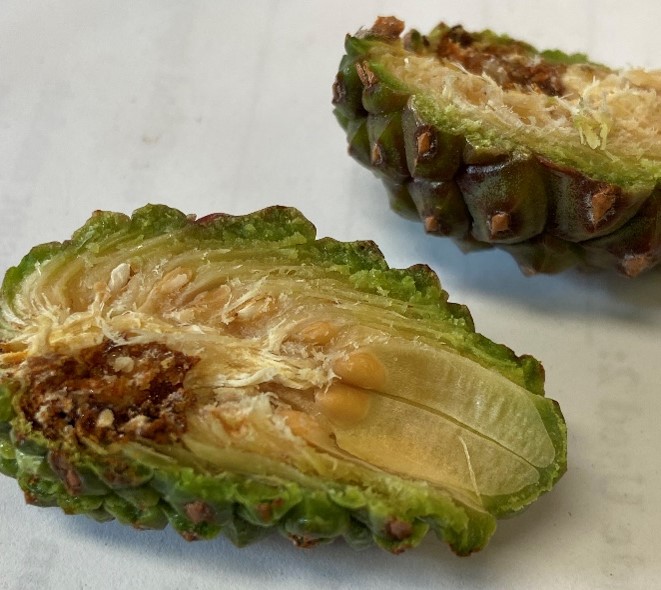
Figure 4: Cross section of that same immature red pine cone. Healthy seeds are visible inside the cone, along with a darkened area of damage likely caused by a seed predator.
The images above all depict immature pine cones that need more time to mature before they are ready to be collected and brought to a state nursery or buying station. Eventually, a pine cone’s outer color will change to a purplish brown and then completely brown, indicating it is likely mature and viable. The seed will have dried wings with an auburn brown seed coat and a hardened interior.
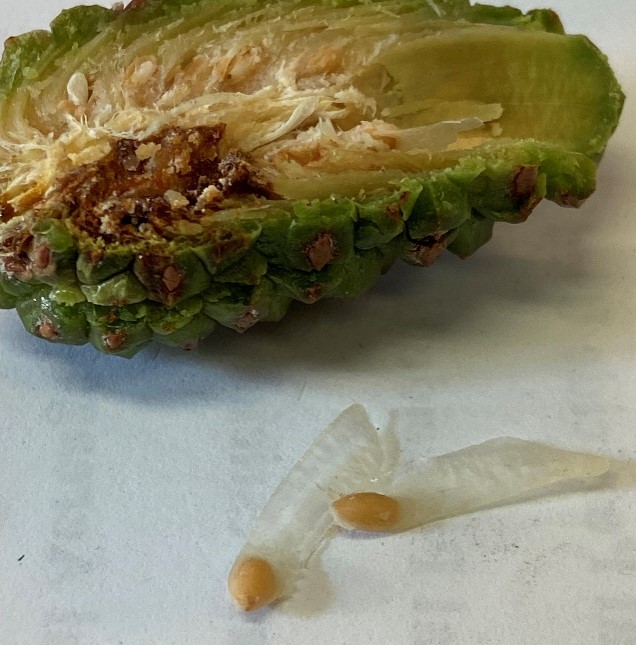
Figure 5: Seeds removed from the cone. The seed coat is still quite light and the wings translucent. Notice some of the seeds that were bisected reveal the interior “meat” of the seeds as bright and milky-colored.
Given the hotter-than-normal weather Wisconsin has seen this summer, we anticipate an earlier maturing of all pine cones. Most cones and seed will be ready to harvest from late August to early September. If you have a pine timber harvest scheduled during that time, or if you’re out hiking and find your way to a young pine plantation, we ask you to consider collecting. The Reforestation Program pays for cones, and a person can be rewarded for some effort out in the forest. Not a bad way to spend a day!
One last request: tell your forestry-focused peers. If you know of someone that may have an interest in seed collection, share the WDNR seed collection effort. We are always looking for interested, educated and passionate seed collectors.
We encourage those interested to get the latest information on collection efforts and other nursery news. We just published the 2025 Seed Collector Newsletter that spotlights each seed species we are looking for this year and provides more information about seed drop-off and buying locations throughout the state.
Thank you, and happy collecting!
